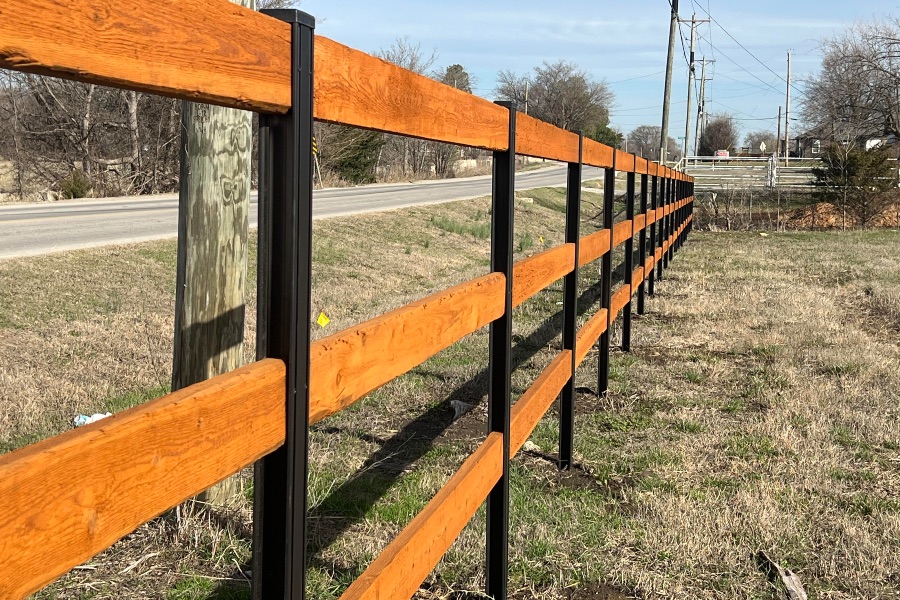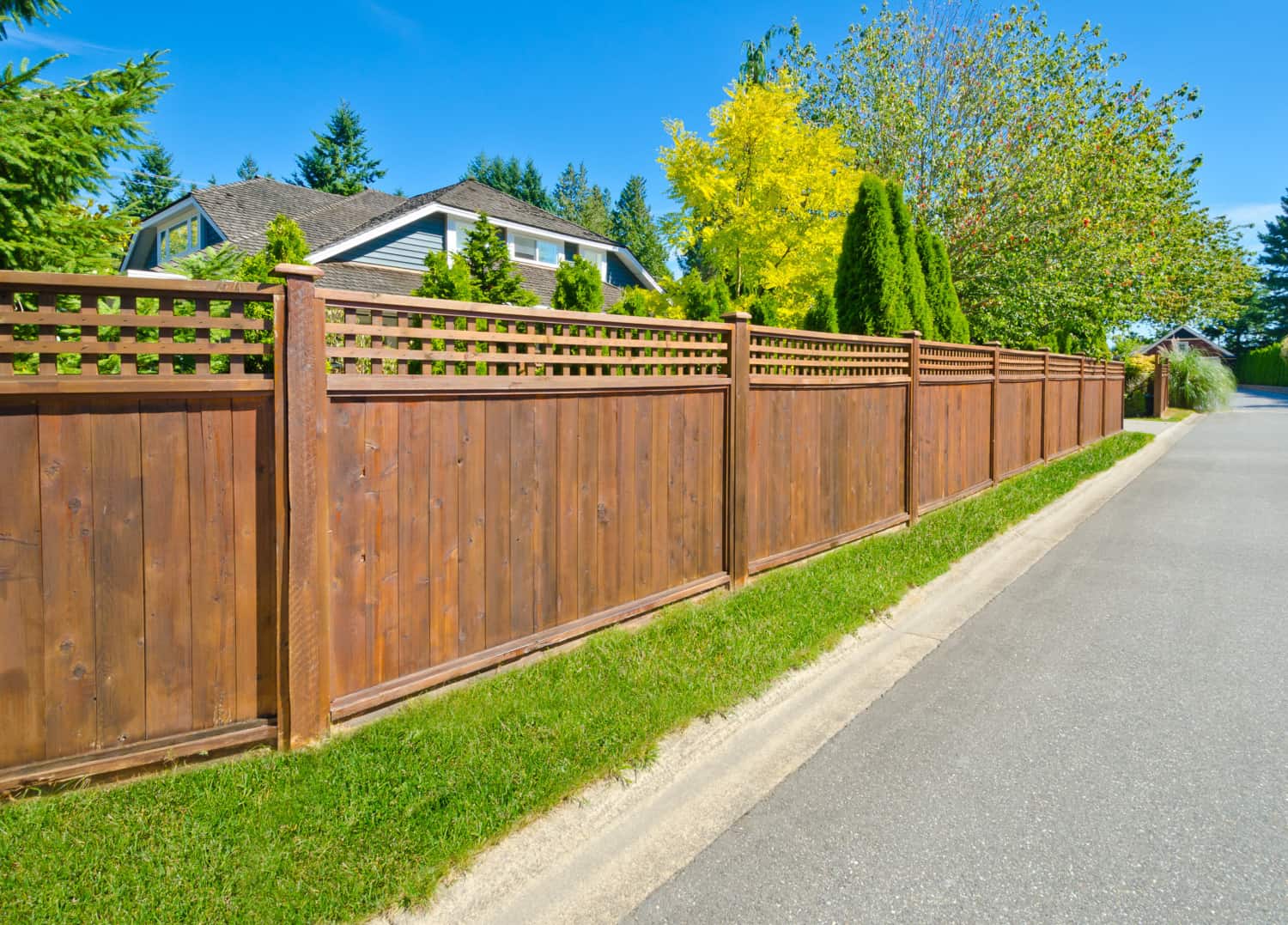Featured
Setting up a fencing on your residential property can include privacy, safety, and aesthetic charm, but prior to you begin digging openings and establishing blog posts, it's vital to comprehend whether you require a license. The kind of fence you intend to install, where it will be put, and local zoning regulations can all influence the permitting process. Not acquiring the necessary permits might lead to fines or the requirement to remove the fencing. Here's what you require to know to ensure a smooth installment process.
Why Are Permits Necessary for Fencing Setup? Authorizations are essential for making sure that your fencing follows regional zoning laws and building codes. These policies help guarantee the safety of your home and the bordering location. Additionally, allows avoid conflicts with neighbors or neighborhood authorities, especially when it comes to residential or commercial property lines, elevation constraints, and overall design.
Oftentimes, regional authorities call for licenses to control things like exposure at junctions or the closeness of a fence to public rooms like roads or pathways. Permits also help guarantee that fences are installed correctly and safely, especially when it concerns high fences or one-of-a-kind products.
Common Sorts Of Licenses for Fence Installation. The kind of fence you intend to set up and your place will certainly determine which authorizations are called for. Here are the most typical kinds:
Building Authorization. A structure license is typically needed for fences that exceed particular elevation limits (usually over 6 feet), are situated near a public roadway or sidewalk, or are made from details materials. Building permits make certain that the structure satisfies regional building codes, including safety and security standards.
Zoning Permit. Zoning permits are typically called for to guarantee that your fence adheres to local zoning laws. Zoning regulations can define where a fencing can be put on your residential property (e.g., along home lines or in front backyards), as well as established limitations on fencing height. These legislations are developed to protect against blockages that might impact website traffic safety or area appearances.
![]()
Trouble Authorization. In some locations, you may require a problem license to position your fencing a particular distance from home lines, roadways, or utilities. Problems are intended to keep proper room in between frameworks and building borders, lowering potential conflicts with neighbors or public facilities.
Homeowners Organization (HOA) Approval. If your residential or commercial property is component of an area controlled by a Homeowners Organization (HOA), you will likely require approval from the HOA before mounting a fence. HOA standards typically govern the design, elevation, materials, and also shade of fences, ensuring that they match the overall aesthetic of the neighborhood.
The Process for Acquiring a Fence License. To acquire a fence license, you generally require to call your regional city or county workplace. A lot of locations have a structure division or planning workplace where you can get permits. The process entails finishing an application and supplying thorough information concerning your proposed fence, including:
Fencing layout (products, height, style) Location on the home. Home line information (for exact positioning) In numerous instances, a site strategy revealing the suggested fencing's position will be needed. You may additionally require to pay an authorization cost, which can differ based upon area and the intricacy of the project.
As soon as you submit your application, the local authorities will examine it to make sure the fence adheres to regional policies. Depending upon your place, you may likewise need to enable or set up an inspection for a home study.
When Do You Not Required a License? In many cases, a license might not be required. Typically, you could not need an authorization if:
![]()
The fence is under a particular height (frequently 3-4 feet for front yards) You're changing an existing fencing with the same kind and elevation. The fencing is temporary (such as a yard fence) Nonetheless, it's always an excellent concept to talk to your regional structure or zoning division to confirm the demands, as guidelines can vary.
Consequences of Not Getting an Authorization. Failing to obtain the needed licenses can lead to various concerns. The most typical effect is being fined or asked to remove the fencing. In some instances, you may need to re-install the fencing according to code, which could be time-consuming and pricey. In addition, not following the proper permitting process can produce problems with neighbors, particularly if your fence extends past your home line or does not satisfy elevation or design demands.
Conclusion. Prior to mounting a fence, make certain you're conscious of the regional guidelines and whether you need a permit. By obtaining the correct permits, you'll guarantee that your fence is legitimately certified, safe, and free from future problems.
Why Are Permits Necessary for Fencing Setup? Authorizations are essential for making sure that your fencing follows regional zoning laws and building codes. These policies help guarantee the safety of your home and the bordering location. Additionally, allows avoid conflicts with neighbors or neighborhood authorities, especially when it comes to residential or commercial property lines, elevation constraints, and overall design.
Oftentimes, regional authorities call for licenses to control things like exposure at junctions or the closeness of a fence to public rooms like roads or pathways. Permits also help guarantee that fences are installed correctly and safely, especially when it concerns high fences or one-of-a-kind products.
Common Sorts Of Licenses for Fence Installation. The kind of fence you intend to set up and your place will certainly determine which authorizations are called for. Here are the most typical kinds:
Building Authorization. A structure license is typically needed for fences that exceed particular elevation limits (usually over 6 feet), are situated near a public roadway or sidewalk, or are made from details materials. Building permits make certain that the structure satisfies regional building codes, including safety and security standards.
Zoning Permit. Zoning permits are typically called for to guarantee that your fence adheres to local zoning laws. Zoning regulations can define where a fencing can be put on your residential property (e.g., along home lines or in front backyards), as well as established limitations on fencing height. These legislations are developed to protect against blockages that might impact website traffic safety or area appearances.

Trouble Authorization. In some locations, you may require a problem license to position your fencing a particular distance from home lines, roadways, or utilities. Problems are intended to keep proper room in between frameworks and building borders, lowering potential conflicts with neighbors or public facilities.
Homeowners Organization (HOA) Approval. If your residential or commercial property is component of an area controlled by a Homeowners Organization (HOA), you will likely require approval from the HOA before mounting a fence. HOA standards typically govern the design, elevation, materials, and also shade of fences, ensuring that they match the overall aesthetic of the neighborhood.
The Process for Acquiring a Fence License. To acquire a fence license, you generally require to call your regional city or county workplace. A lot of locations have a structure division or planning workplace where you can get permits. The process entails finishing an application and supplying thorough information concerning your proposed fence, including:
Fencing layout (products, height, style) Location on the home. Home line information (for exact positioning) In numerous instances, a site strategy revealing the suggested fencing's position will be needed. You may additionally require to pay an authorization cost, which can differ based upon area and the intricacy of the project.
As soon as you submit your application, the local authorities will examine it to make sure the fence adheres to regional policies. Depending upon your place, you may likewise need to enable or set up an inspection for a home study.
When Do You Not Required a License? In many cases, a license might not be required. Typically, you could not need an authorization if:

The fence is under a particular height (frequently 3-4 feet for front yards) You're changing an existing fencing with the same kind and elevation. The fencing is temporary (such as a yard fence) Nonetheless, it's always an excellent concept to talk to your regional structure or zoning division to confirm the demands, as guidelines can vary.
Consequences of Not Getting an Authorization. Failing to obtain the needed licenses can lead to various concerns. The most typical effect is being fined or asked to remove the fencing. In some instances, you may need to re-install the fencing according to code, which could be time-consuming and pricey. In addition, not following the proper permitting process can produce problems with neighbors, particularly if your fence extends past your home line or does not satisfy elevation or design demands.
Conclusion. Prior to mounting a fence, make certain you're conscious of the regional guidelines and whether you need a permit. By obtaining the correct permits, you'll guarantee that your fence is legitimately certified, safe, and free from future problems.
Latest Posts
Check Out Best Car Repair Care in Chicago – Drive with Confidence
Published May 28, 25
1 min read
Discover Cut Costs on Car Maintenance with Montclare Auto Repair’s Exclusive Deals
Published May 22, 25
1 min read
Meet Premier Retina Specialists in Your Area with Eye Center South
Published May 21, 25
1 min read
More
Latest Posts
Check Out Best Car Repair Care in Chicago – Drive with Confidence
Published May 28, 25
1 min read
Discover Cut Costs on Car Maintenance with Montclare Auto Repair’s Exclusive Deals
Published May 22, 25
1 min read
Meet Premier Retina Specialists in Your Area with Eye Center South
Published May 21, 25
1 min read